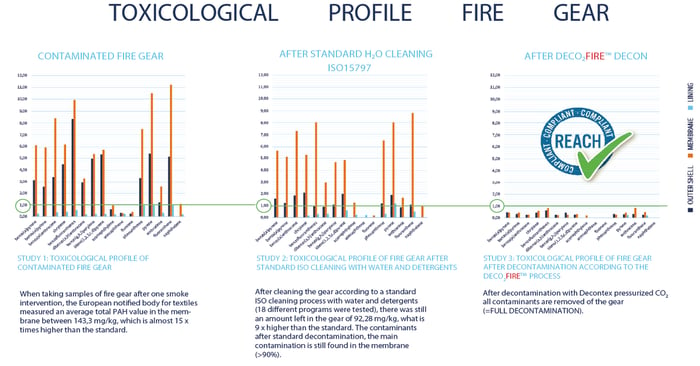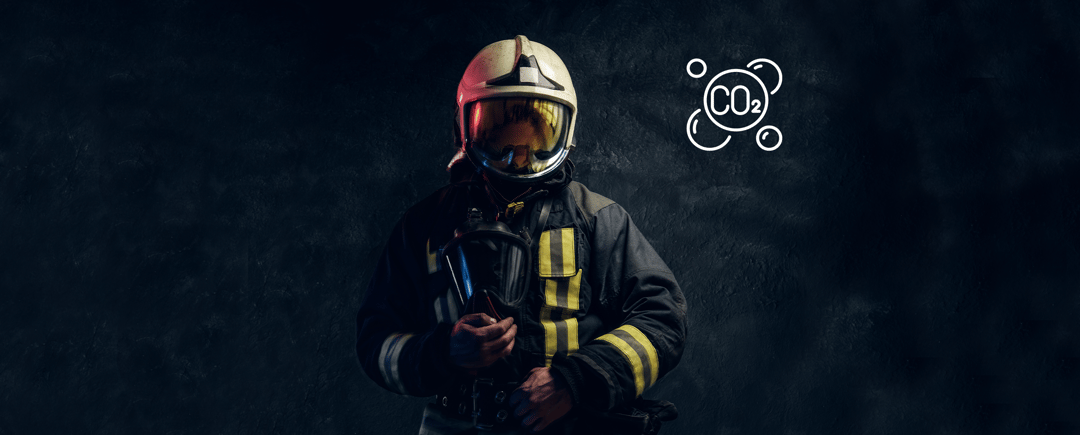CO2 cleaning is a relatively new washing process for fire suits. How does it work and what are its benefits? To find out more about CO2 cleaning and why it’s been brought to the market, we invited Tommy Verminck to share his expertise with us. Tommy is CEO of Decontex, who are experts in the decontamination of fire gear. Read on to see what he had to say.
How did CO2 cleaning come about?
CO2 cleaning in itself is not new — NASA used this technology back in the 1980s to decontaminate astronaut suits. As part of a larger project on cancer prevention within the fire service, the European Accredited Laboratory for Textiles Centexbel first applied this NASA technology to firefighters' clothing, some 10 years ago. Centexbel's report showed a superior performance in removing carcinogenic substances compared to traditional washing methods with water and detergents. One of the main differences was the fact that the CO2 technology could also completely remove contaminants from the moisture barrier, which is virtually impossible with water.
Decontex transformed the NASA technology into a decontamination technology for firefighters’ gear. The technology involves a combination of high-performance CO2 extraction machines and heavy duty CO2 liquids, alongside the appropriate control software, to ensure that the fire suits do not degrade during the process. The patented technology is made available to the fire service under a service model or to Decontex-partners under a license model.
How does CO2 cleaning work?
The major difference between cleaning with water and liquid CO2 is the fact that CO2 in the liquid phase has a much lower density than water. This allows it to clean through the membrane, which water cannot do.
CO2 cleaning is done in stages:
-
Initially, the contaminated clothing is placed in the working drum and the machine door is hermetically sealed.
-
In phase 2, the drum is vacuumized and then all the air is replaced by CO2 gas. The CO2 gas also saturates between the fibers of the soil.
-
In phase 3, the working drum is pressurized (+/-40bar) and the aggregation state of the CO2 changes from the gas phase to the liquid phase. This aggregation change breaks the main forces between the soil and the textile, and the soil falls off the textile.
-
In the final stage, the moisture barrier is decontaminated. For this purpose, a storage vessel was built into the machine containing 2000 liters of liquid CO2. This is pushed through the membrane 8 to 12 times until this membrane is completely free of contaminants.
Why opt for CO2 cleaning?
1. Proven highly effective decontamination
You only have to look at the graph below to see the vast difference in the toxicological profile of contaminated fire gear after standard H2O cleaning versus CO2 cleaning. Across the outer shell, moisture barrier and lining, all contaminants were dramatically reduced.

- Low temperature: max. 30°C
- Low drum speed: max. 12rpm
- Short process time: max. 40min
- No drying required
- Low energy use
- Closed system => reusable CO2
- 100% waterless
- 0% dirt drainage
- 0% environmental waste like micro-plastics
A word of advice for the end user: not all CO2 machines are suitable for decontaminating firefighters' clothing. It is always best to ask the service provider for the necessary certificates. Decontex and TenCate have worked together to carry out extensive testing to confirm the compatibility between the various qualities of the firefighter outer fabrics and the Decontex washing technology, and can advise based on such results.
Want to learn more about CO2 cleaning?
If you’d like to find out more about the history, process and applications of CO2 cleaning, and whether it might be an effective solution for your workplace, please feel free to get in touch. We’ll be happy to connect to you a specialist who can talk you through any questions you may have.




.png?width=399&name=Untitled%20design%20(50).png)



